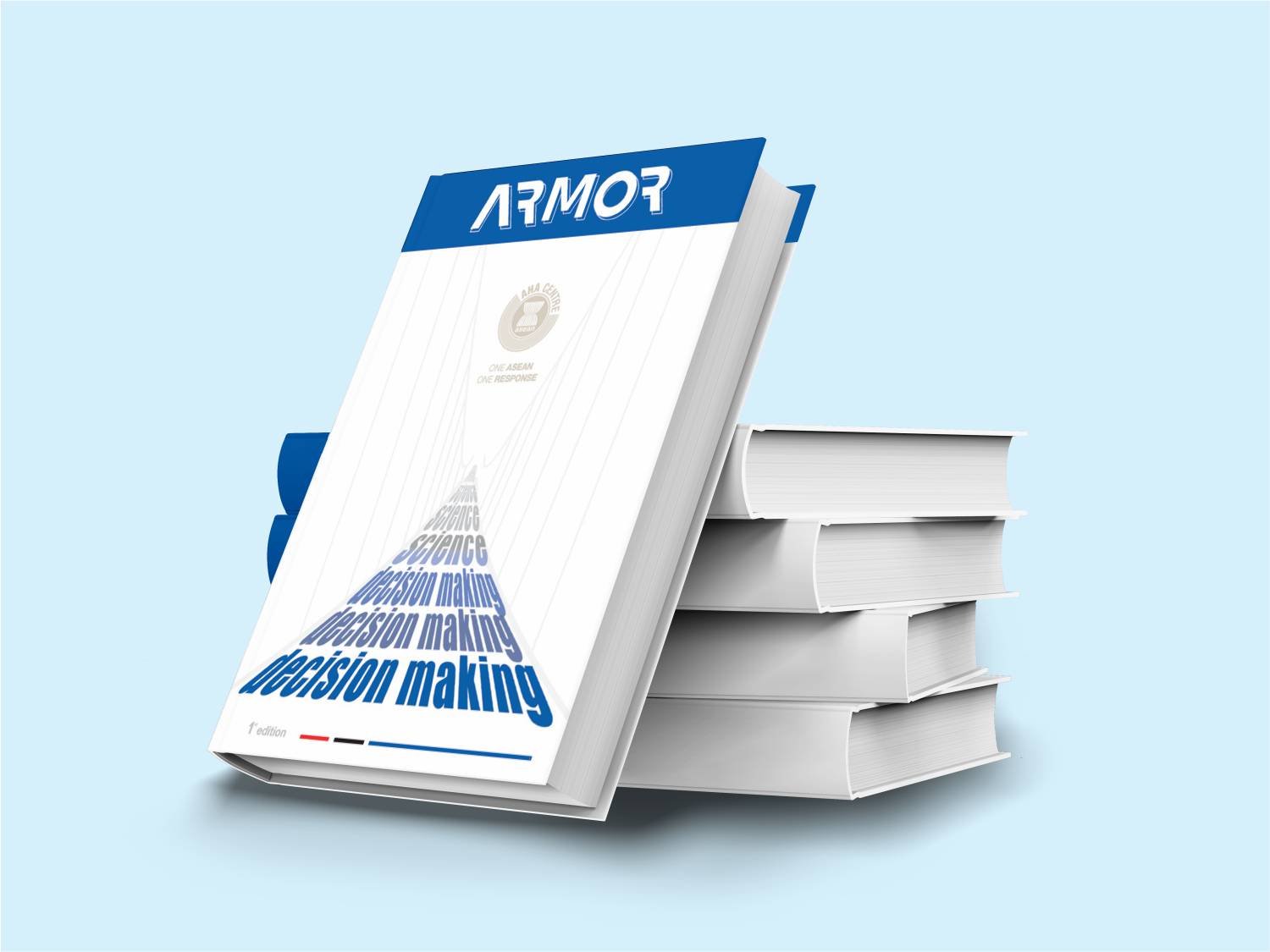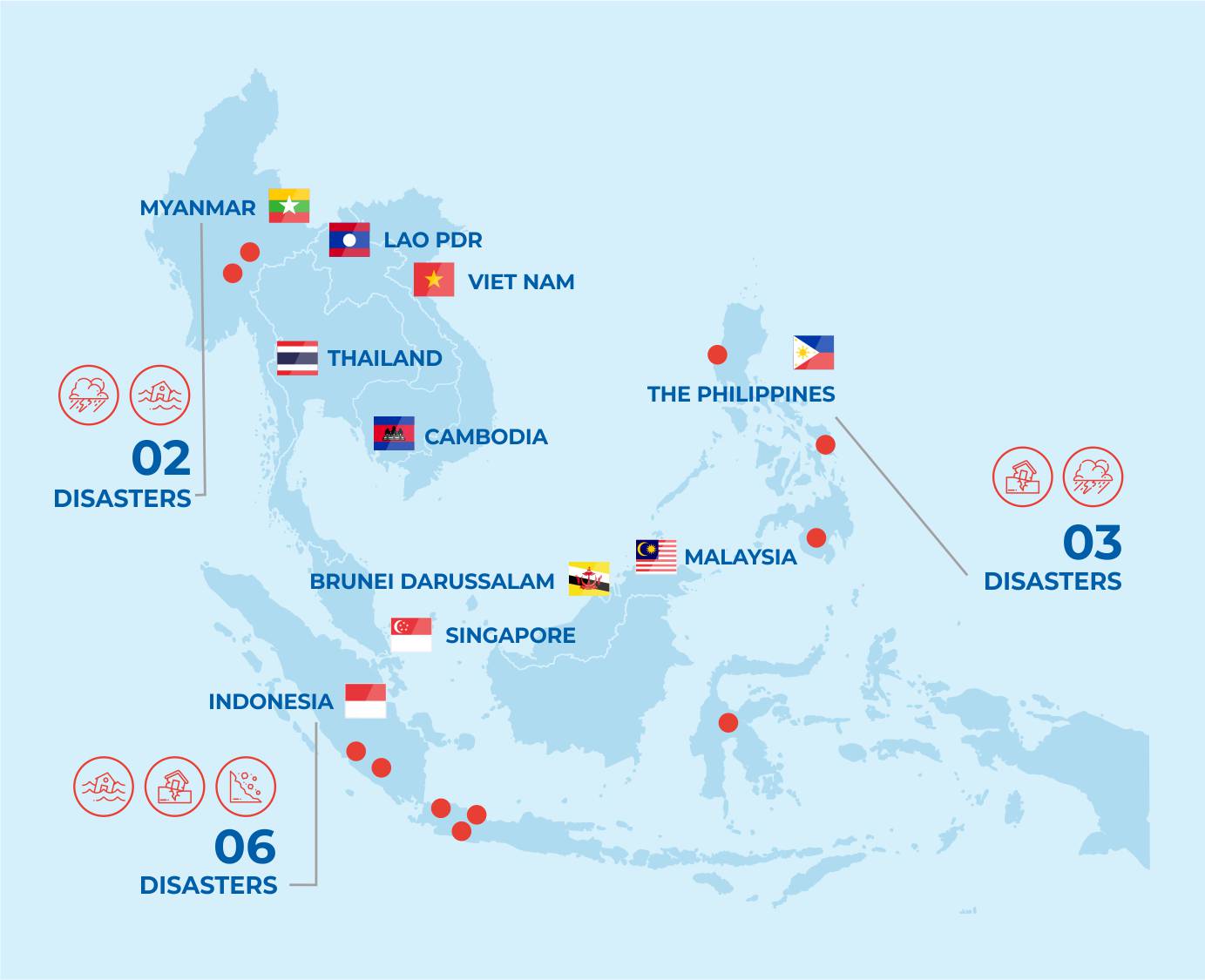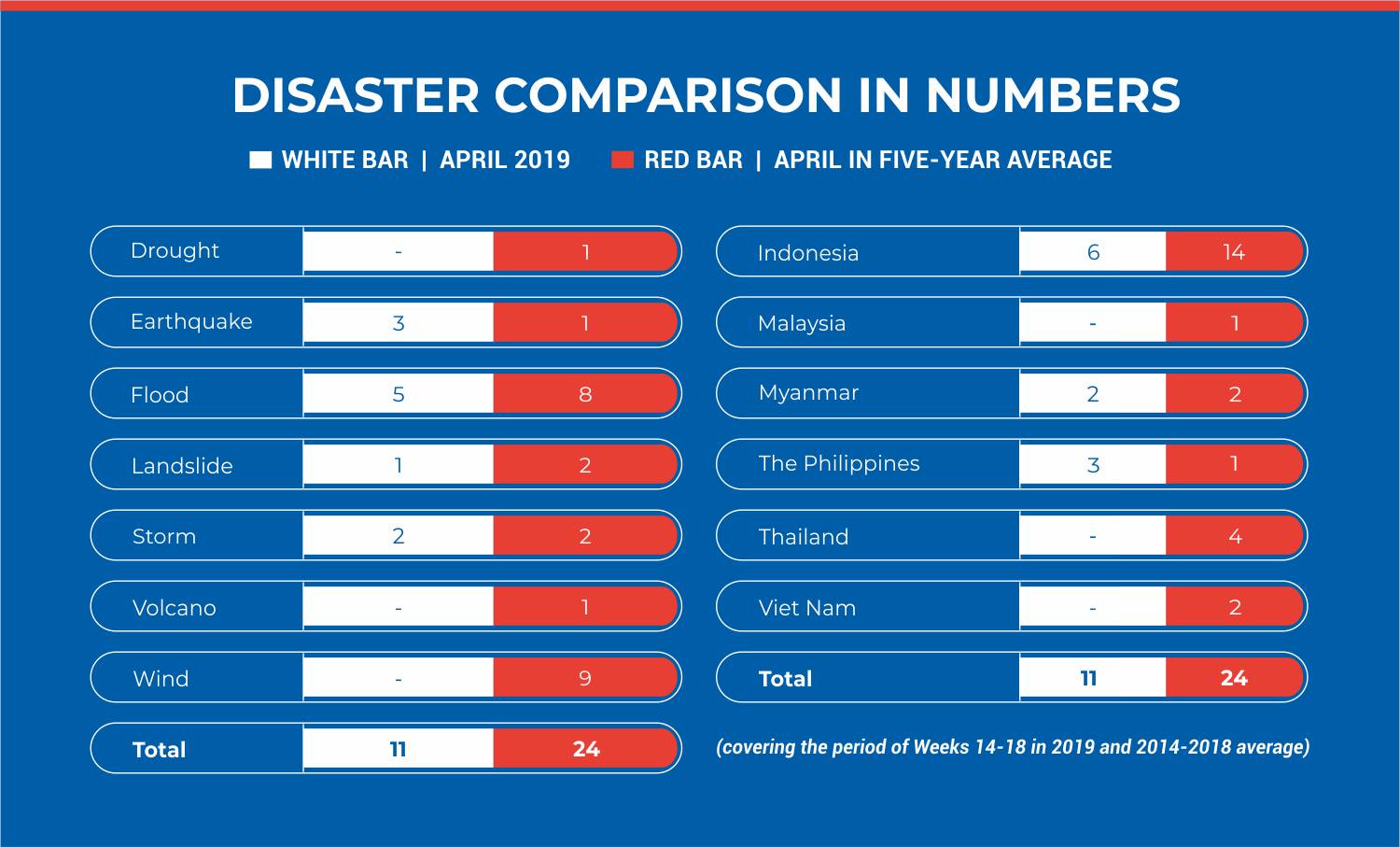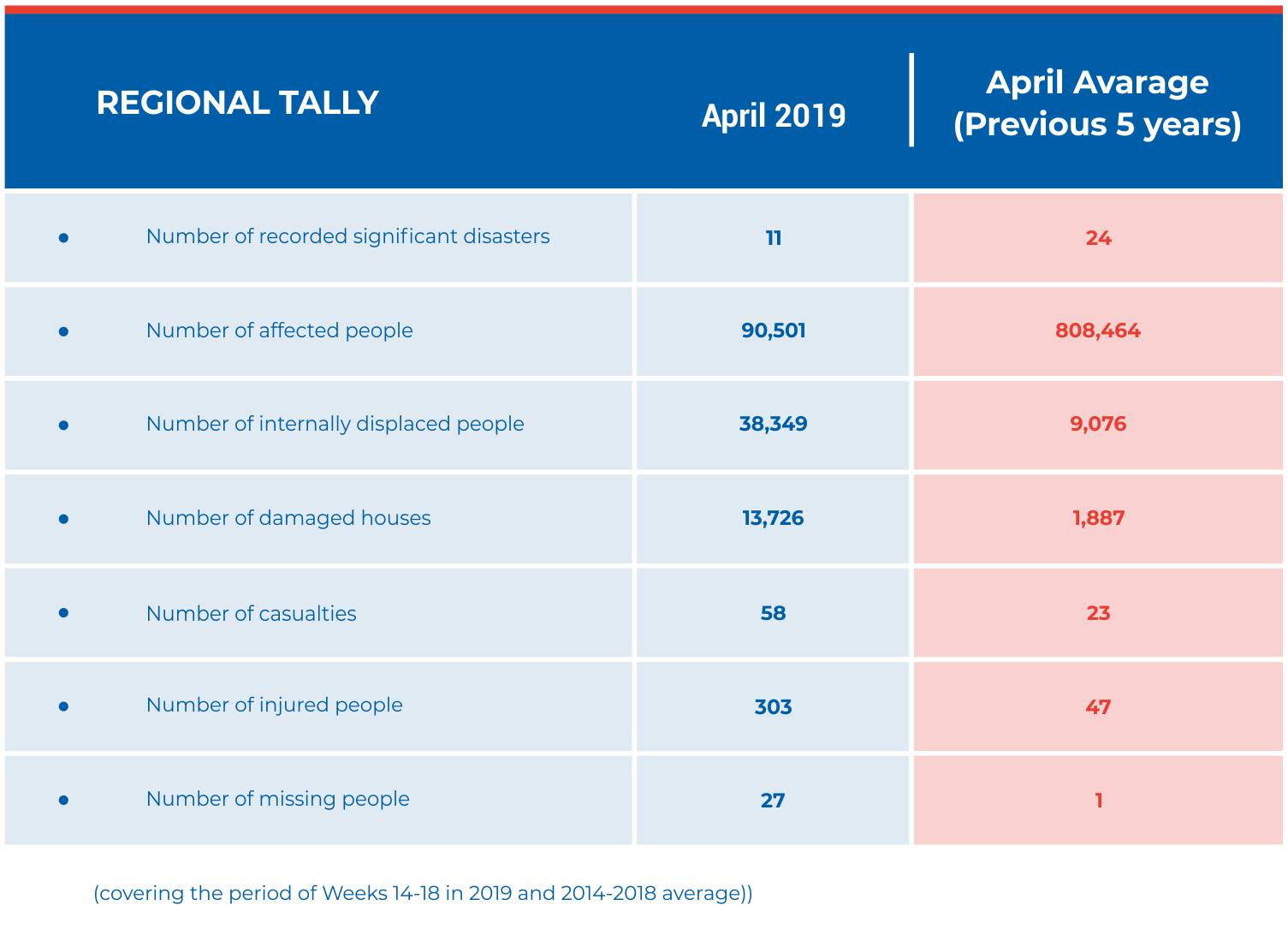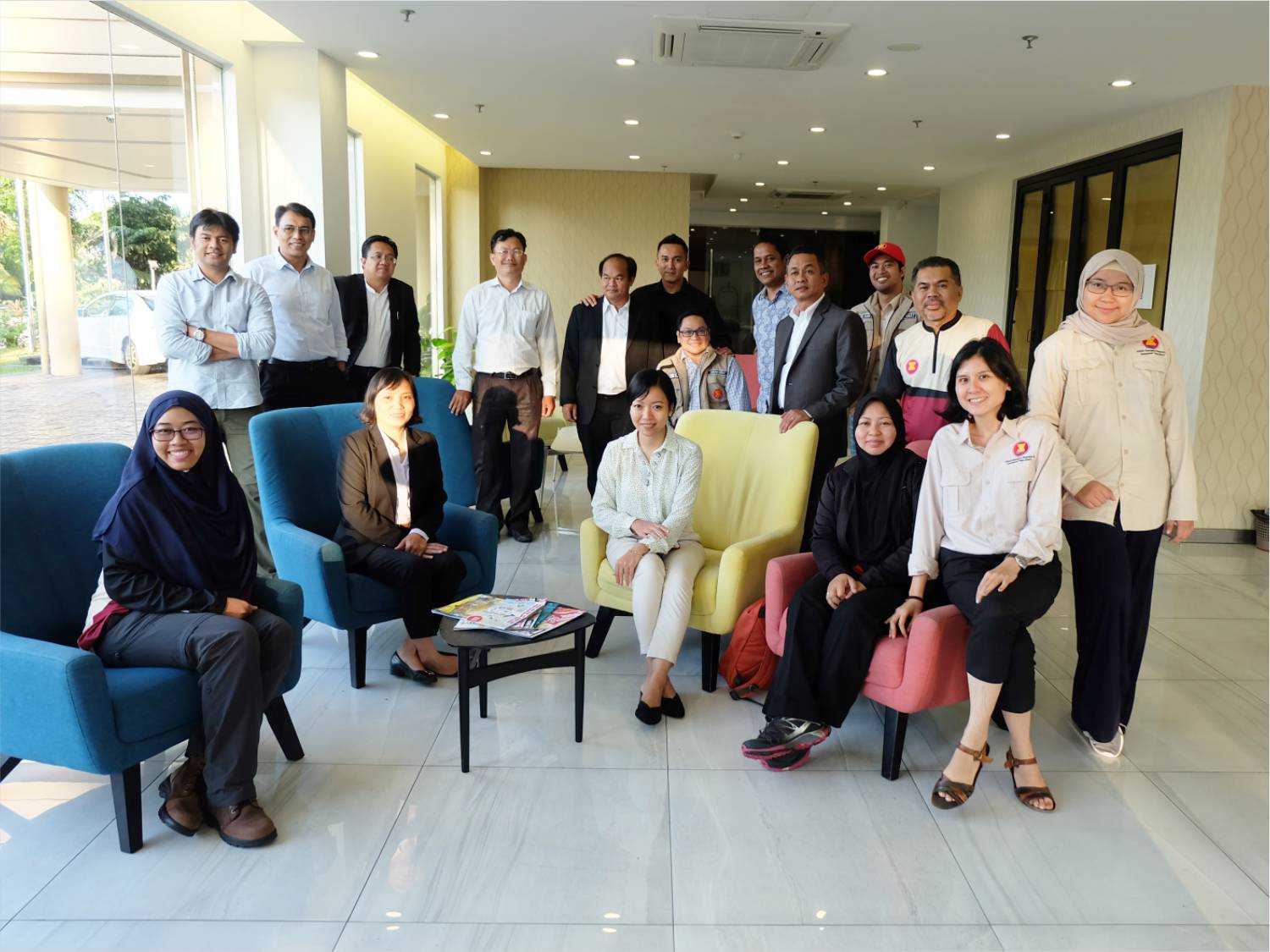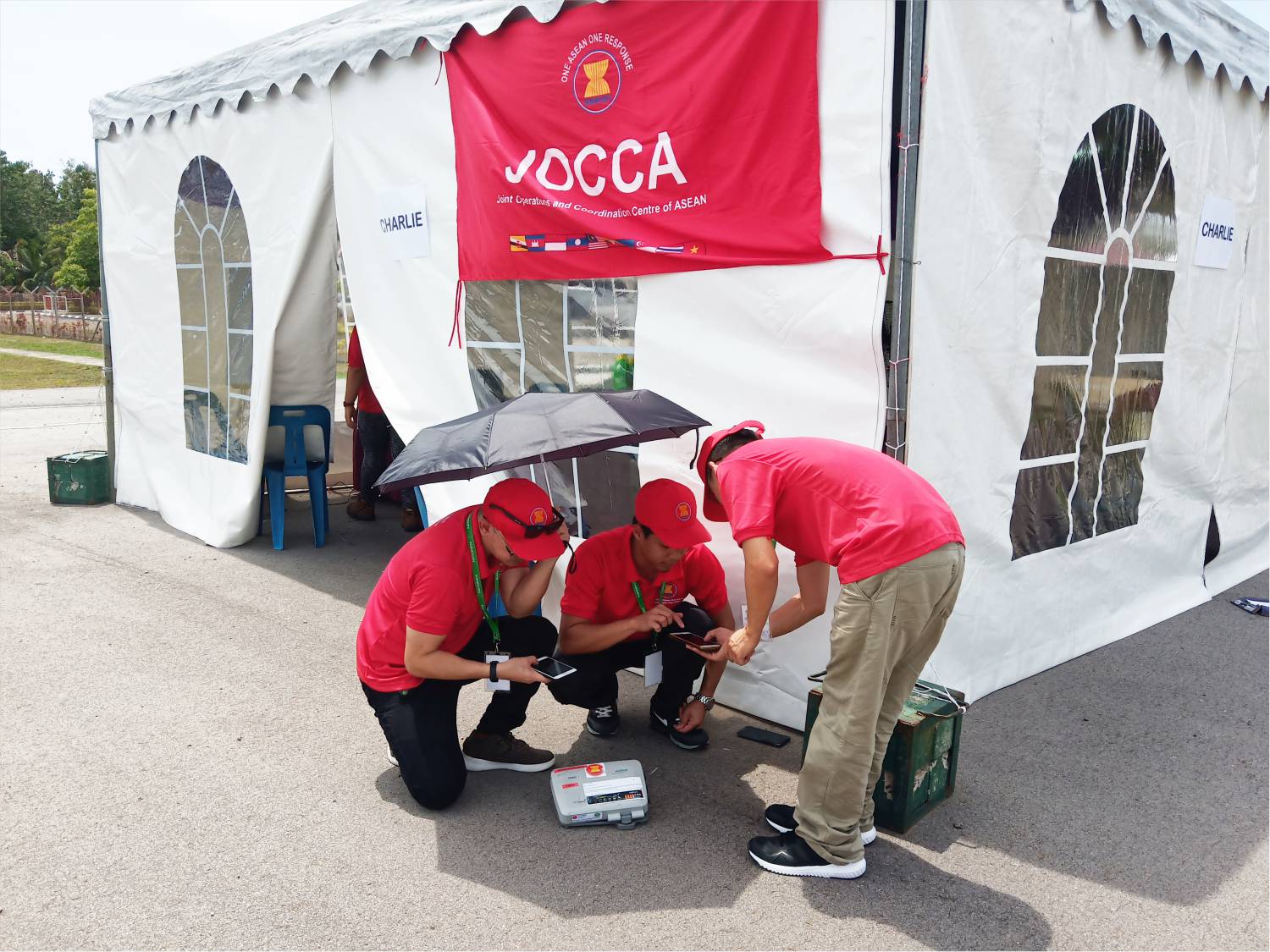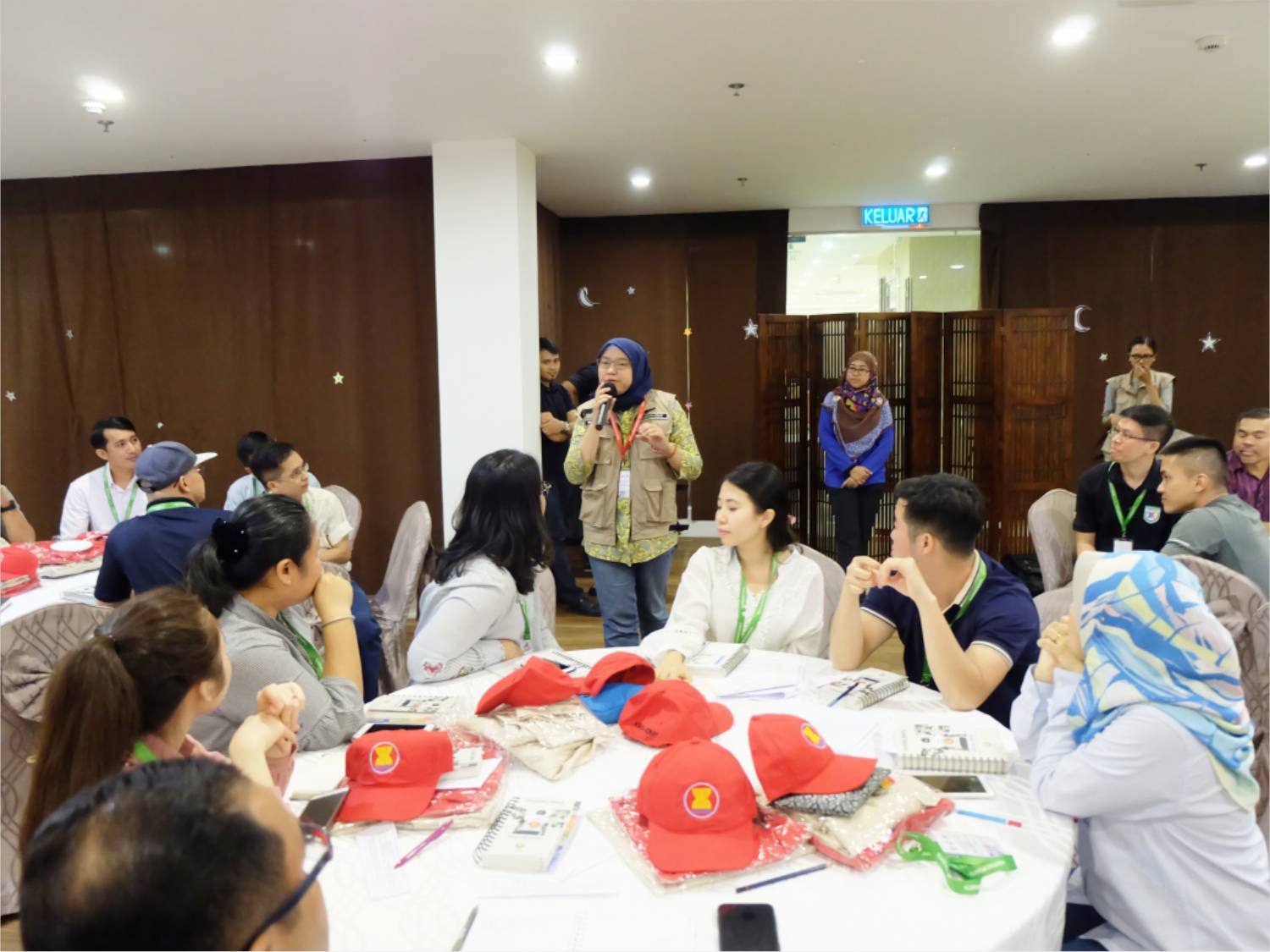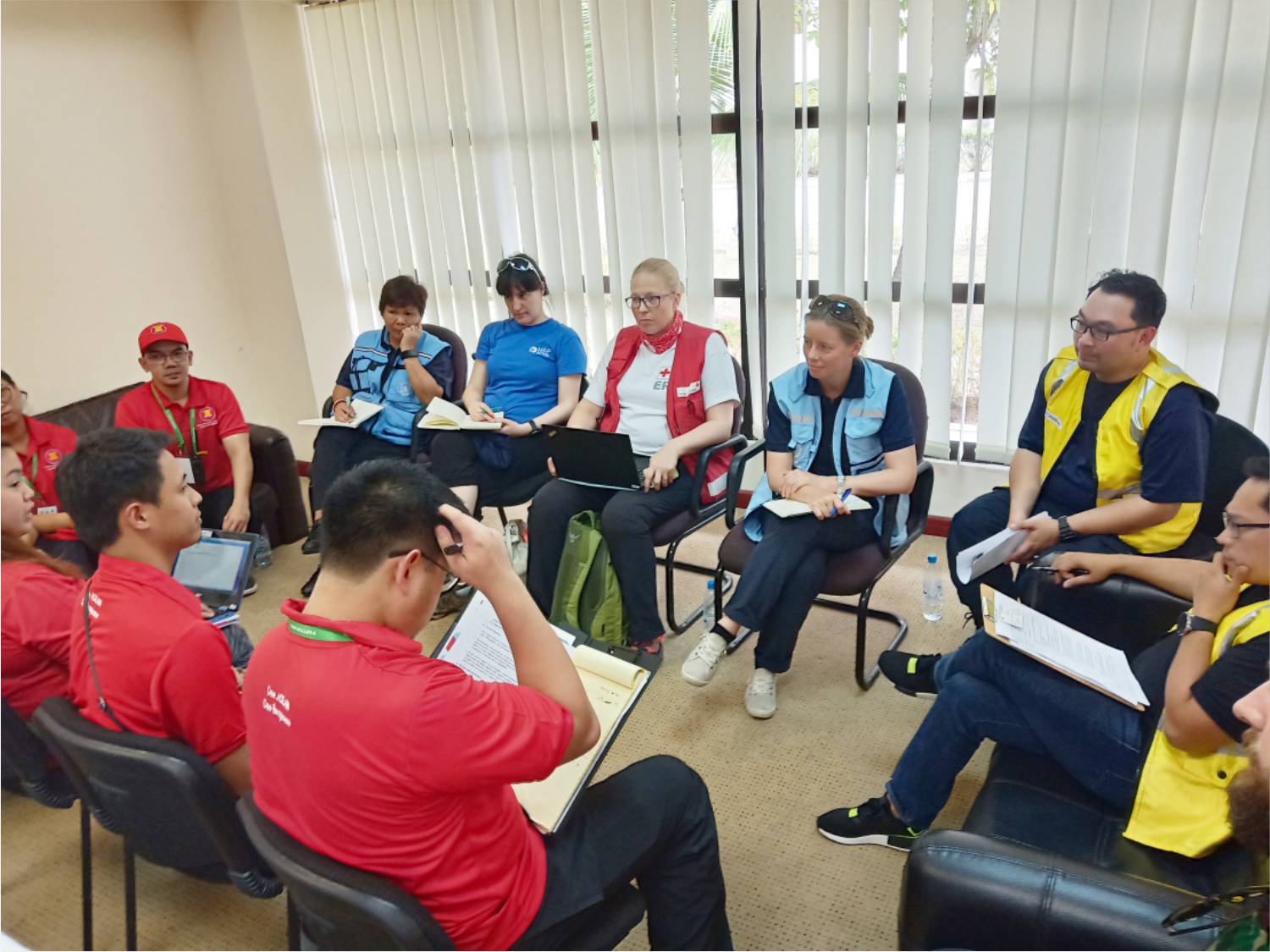Vol 50-BOOK REVIEW: THE ASEAN RISK MONITOR AND DISASTER MANAGEMENT REVIEW (ARMOR)

BOOK REVIEW:
THE ASEAN RISK MONITOR AND DISASTER MANAGEMENT REVIEW
(ARMOR)
As covered in Volume 49 of the Column, the AHA Centre’s publication and launch of the ASEAN Risk Monitor and Disaster Management Review (ARMOR) recently took place, with the publication aiming to bridge science with decision making in the region’s disaster management field. The journal, made-up of 10 unique chapters, stands as the first publication of its kind providing risk profile information specifically regarding the ASEAN region. As the sheer amount of accumulated knowledge and information on disaster in the region continues to grow, the first ARMOR publication opens a forum for critical analysis and synthesis of such information, aiming to inform policy making and disaster management operations, both within the region and outside. Importantly, the first edition also highlights best practices, trends and innovations in ASEAN disaster management, and provides the platform for further expansion of current ideas as well as facilitating a space for new considerations from some of the region’s leading disaster management minds.
NEW AND UNIQUE INSIGHTS
One of the stand-out features from ARMOR’s first edition is the range of new, innovative and unique information it provides regarding disaster management in the region. A modern and unique theme is raised in Chapter Five, as the authors take readers through the context of Natech: The Silent and Potentially Deadly Threat in ASEAN, that discusses the growing potential risk of Natech (technological incidence/disasters triggered by natural hazards) in ASEAN, and how the region can work to mitigate such risks. Such an area is becoming increasingly relevant as the region continues to develop, with the risks related to technological disaster due to natural hazards increasing alongside the increasing numbers of factories, hazardous material sites and technology-based infrastructure throughout ASEAN’s landscape.
Chapter Two (Most-at-Risk Cities in ASEAN That Must be Watched) also gives the readers a fresh update regarding research findings on risk of disaster for ASEAN cities, with new and updated data leading to some interesting and unexpected findings – some of which challenge traditional perceptions regarding disaster management in the region. Similar findings and unique circumstances are also delivered in Chapter One Trillion Dollar Multi-Hazard Risk Landscape in Southeast Asia article. An interesting discussion on Utilisation of Space-based Information for Supporting Emergency Response and Recovery takes place through Chapter 10, with the article developed based on actual emergency response experiences that utilised space-based information, alongside direct field observation, to inform operational decision making.
THE ASEAN REGION’S PROGRESS IN DISASTER MANAGEMENT
A key strength of ARMOR is its delivery of information related to the ‘state-of-play’ for disaster management in the ASEAN region. We are provided with a strong insight into the relevant topic of climate change and its impact on areas such as water, food and health security during disaster, with Chapter Three focused on Why Climate Change Matters for ASEAN. The conversation on early warning systems and their use and impact for ASEAN is also highlighted, with Chapter Five providing analysis and a snapshot of the State of Early Warning Systems in ASEAN. ARMOR also provides focus to the AHA Centre itself, particularly the opportunities for the AHA Centre to fully realise its role as a knowledge hub for disaster management. This interesting insight is covered through in Chapter Seven’s Regional Knowledge Hub for Disaster Management: Strategy, Policy and Practice in ASEAN, followed-on directly with Chapter Eight discussing the evolving roles of the AHA Centre in Regional Centrality and the Shift of Humanitarian Landscape: The Case of ASEAN. Such information is developed by analysing and comparing two uniquely different emergency response operations – super typhoon Haiyan and the earthquake and tsunami in Central Sulawesi – providing readers not only a historical insight to the change that has evolved over time, but also the key areas in which the AHA Centre has established its role within the regional disaster management landscape.
KNOWLEDGE THAT CROSSES GENERATIONS
A great aspect of this ARMOR edition is the array of input from researchers and professionals covering different generations and skillsets, ensuring that the full scope of ASEAN disaster management is encompassed within the 10 chapters. We learn about the history of ASEAN disaster management and lessons learned through Achieving the ASEAN 2025 Vision for Disaster Management: Lessons from a Worthy Journey in Chapter Nine – a piece developed by seasoned researchers Alistair D. B. Cook and Lina Gong. In contrast, one of ASEAN’s up-and-coming disaster researchers, Juwita Nirmalasari, proposes an innovative way to accurately and immediately identify drought events that can be utilised by policy makers to engage in early and significant interventions, as the guest contributor in Chapter Six titled Application of Breaks for Additive Season and Trend (BFAST) for Drought Monitoring. This range of elements, mix of modern and historical outlooks, and the array of experiences and backgrounds provides balance and space for innovation throughout the entire journal. In reality, it represents how the ASEAN disaster management sector should be perceived throughout all of its efforts – combining experience and lessons learned based on research and data, while remaining open and ready to embrace new technology and innovative ideas from new generations of disaster managers moving through the ranks.
Written by : William Shea
- Published in Insight
Vol 50-MONTHLY DISASTER REVIEW AND OUTLOOK

MONTHLY DISASTER REVIEW AND OUTLOOK
APRIL 2019 | DISASTER MONITORING & ANALYSIS
(DMA) UNIT, AHA CENTRE
GENERAL OVERVIEW OF APRIL 2019
April began 2019’s second quarter by continuing the trend of lower disaster occurrences compared to the average of the five previous years, with the number of people affected by disaster reaching only 11% of the previous five-year average. This significant difference is primarily caused by an extreme event during 2016 that skews the five-year average – namely the 2016 drought in Cambodia that affected 2.5 million people. On the other hand, April 2019 witnessed higher-than-average displacement, house damage, and casualty figures. A majority of population displacement during April was due to widespread flooding and rain-induced landslides in Indonesia and Myanmar. Increased atmospheric activity, due to the inter-monsoon period, resulted in scattered rain showers across the region, while the Madden-Julian Oscillation further enhanced the duration and amount of rainfall in Indonesia during the last week of the month. Meanwhile, a majority of house damage was due to a hailstorm in Central Myanmar, that saw hailstones as large as golf balls raining down on homes made from light materials. Three disaster events significantly influenced the rise in casualties across the region – namely flooding, followed by a rain-induced landslide in Bengkulu Province, Indonesia, and the magnitude 6.1 earthquake in Central Luzon, the Philippines.
Geophysical activity registered 56 earthquakes of magnitude 5.0 and above during April 2019. Three of these earthquakes resulted in significant impact to people and structures, seeing them classified in disaster statistics – a 6.8M in Central Sulawesi, Indonesia (close to ground zero for the devastating 7.5M earthquake that triggered a tsunami and liquefaction in 2018), and back-to-back 6.1M and 6.5M earthquakes in Central Luzon and Eastern Samar, the Philippines. Lastly, there were four volcanoes, all in Indonesia, being monitored due to increased activities – Mount Agung, Mount Karangetang, and Mount Soputan, all at Alert Level 3, and Mount Sinabung, which is at Alert Level 4, the highest alert level for volcanoes in Indonesia.
SEASONAL OUTLOOK
The inter-monsoon period is expected to last until June, upon which the Southwest Monsoon will become dominant in the region. During this transition, a northward shift of monsoon rain bands will be observed. While rainy conditions are expected in the northern ASEAN region, the ASEAN Specialised Meteorological Centre forecasts generally below-average rainfall. However, the gradual increase in rain shower activities is expected to subdue hotspot activities and improve haze conditions in the Mekong sub-region. Meanwhile, drier weather conditions are expected to slowly increase across the southern ASEAN region, particularly in Indonesia. Seasonal models tend to exempt the southern ASEAN region from the warmer temperatures expected in most of the region during the second quarter of the year.
As part of its preparatory activities for the rainy season in the northern ASEAN region and dry conditions in the southern ASEAN region, the AHA Centre will conduct a table-top exercise to test its Emergency Response Organisation procedures for responding to any disaster within the region. Alongside this, connectivity testing with respective Emergency Operations Centres (EOC) of each ASEAN Member State is also being planned. Finally, in cooperation with the Pacific Disaster Center (PDC Global), a DisasterAWARE Multi-Hazard Monitoring Platform is planned to be established in Brunei Darussalam, Cambodia, Lao PDR, and the Philippines. DisasterAWARE is a powerful and reliable early warning and multi-hazard monitoring platform, that supports disaster management and emergency response by providing early warning, multi-hazard monitoring, impact assessment modelling, and geospatial data. The Centre has been using the regionally-adapted version of DisasterAWARE, (Disaster Monitoring and Response System – DMRS), in its daily operations for many years. At present, the AHA Centre and PDC Global are working with Myanmar to develop capacity and capability to utilise the DMRS, while several ASEAN Member States already utilise their own versions of DisasterAWARE – including Indonesia, Thailand, and Viet Nam.
Data Sources: ASEAN Disaster Information Network, ASEAN Specialised Meteorological Centre
Written by : Lawrence Anthony Dimailig, Shahasrakiranna
DISCLAIMER
Disclaimer: AHA Centre’s estimation is based on data and information shared by National Disaster Management Organisations (NDMOs) and other relevant agencies from ASEAN Member States, international organisations and news agencies. Further information on each recorded-significant disaster, description and detail of data and information are available at: http://adinet.ahacentre.org/reports.
- Published in Monthly Disaster Outlook
Vol 50 – THE 11TH ASEAN-ERAT INDUCTION COURSE

THE 11TH ASEAN-ERAT
INDUCTION COURSE
Following the success of the previous courses, the AHA Centre conducted the 11th ASEAN Emergency Response and Assessment Team (ASEAN-ERAT) Induction Course to train a new group of disaster responders ready for deployment across the ASEAN region. The Level 1 course took place in Bandar Seri Begawan, Brunei Darussalam, from the 8th to the 15th of April 2019. After successfully completing the 100 hours of course materials and training, the thirty are now prepared to engage in disaster responses at any moment as part of the united One ASEAN, One Response movement.
The course’s 30 participants were made up of representatives from all 10 ASEAN Member States’ National Disaster Management Organisations (NDMOs), and other sectors, such as health, foreign affairs, etc. as well as civil society representatives from the AADMER Partnership a Group (APG), the International Federation of the Red Cross/Red Crescent Societies (IFRC), the ASEAN Secretariat, and staff of the AHA Centre. The 11th ASEAN-ERAT Induction Course was made possible through the strong support of National Disaster Management Centre (NDMC) of Brunei Darussalam, its own In-Country ASEAN-ERAT team, as well as funding support from the Japan-ASEAN Integration Fund (JAIF).
Alongside classroom sessions covering modules of information management, rapid assessment, logistics management, and coordination, there was also a 48-hour simulation exercise that adopted the scenario of a 7.2 magnitude earthquake in Metro Manila. This exercise was injected into the course to prepare and familiarise participants with the situation experienced during real disasters.
“Overall the course was well planned and executed within an interactive classroom sharing setting, as well as a realistic field simulation exercise. This made the learning more engaging and effective. Beyond learning about the technicalities, it was an excellent opportunity to learn and hear from fellow participants from the other NDMOs and organisations about their deployment experiences, as well as their country’s culture”, said Matthew Tay, a participant from the Singapore Civil Defence Force (SCDF).
The success of the 11th ASEAN-ERAT Induction Course was also possible with the engagement of partners from various organisations including MapAction UK, RedR Australia, the Pacific Disaster Center (PDC), the United Nations Office for the Coordination of Humanitarian Affairs (UNOCHA) and the IFRC.
During the course, three graduates of the ASEAN-ERAT Training of Trainers course played important roles as course facilitators, which formed a new innovation during the 11th ASEAN-ERAT Induction Course. “As a relatively newcomer in the area of disaster management, the Induction Course provided me with a compact yet insightful overview of the roles of an international response team during the occurrence of sudden on-set disasters” explained Akmal Aji from the NDMC of Brunei Darussalam.
“Even though many aspects of the course such as the simulation exercise was tough and energy-draining, I thoroughly enjoyed the whole experience, as it was rewarding to be learning a skill-set that can contribute to alleviating the hardships faced by people affected by the devastating impact of natural hazards” he continued.
Fittingly, Mr. Aji highlighted the importance of the engagement of all the different parties within the course, when he said that “The training wouldn’t have been as fun if it hadn’t been for the other participants and the course facilitators, who aside from being knowledgeable and helpful, ensured that the entire course was well-organised and carried-out successfully”.
Written by: Melya Wardhani | Photo : AHA Centre
- Published in Highlight
- 1
- 2

